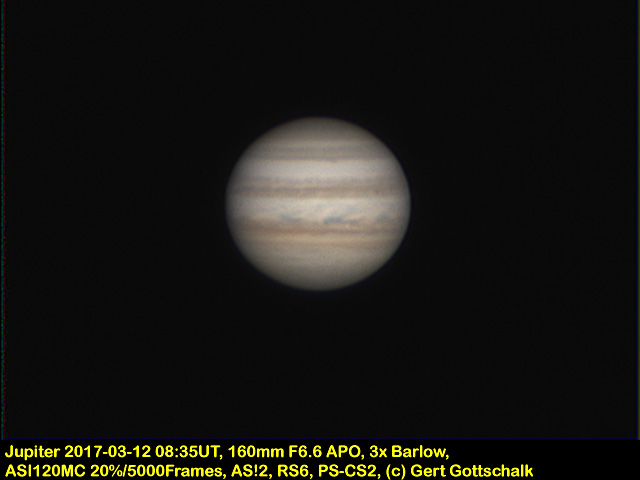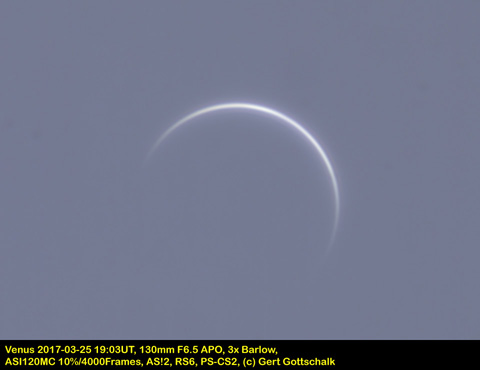Latest observations added at the top.
Images taken with 5inch or 6inch APO refractor or 12inch CDK
Recording with DMK41 or ZWO120MC with FireCapture. Processing in AstroStakkert!2, Registax 6 and Photoshop CS2.
2017-11-13 05:03UT There are no other planets viosible from my place so I took this image of Uranus. At the time the angular diameter of the disk was only 3.7arcsec, so we can't expect to see much given the apertur of only 130mm. The exposure was part of a test of several barlow lenses. The TV2.5x and TV3x came out best in the end.
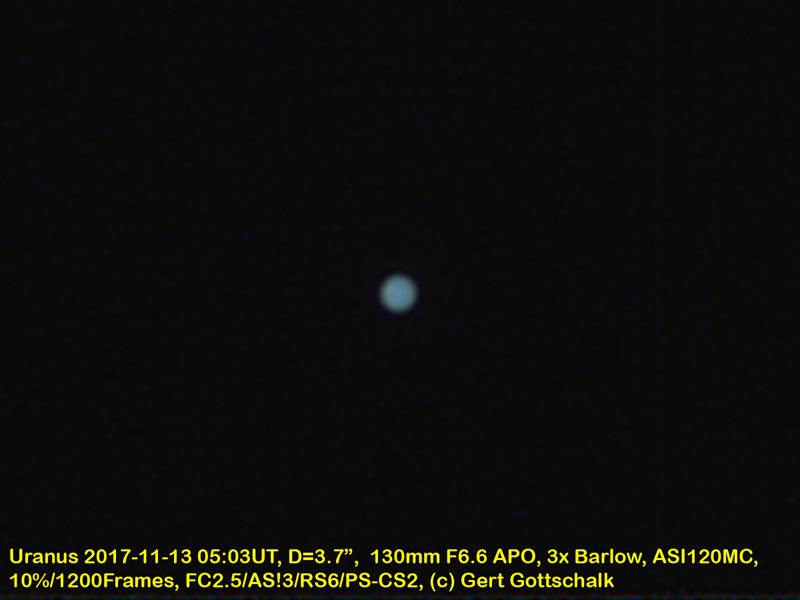
2017-07-02 04:26UT & 05:10UT. I got out with the telescope to the DelValle Park observing site to test out the alignment of the new right angle polar finder scope. It worked well, and I decided to take some images of Jupiter and Saturn which were positioned favourable. There was no particular event of Jupiter's Moons or the Great red Spot. Both images were with the same optical setup and camera. A nice opportunity to compare the size of the planets.
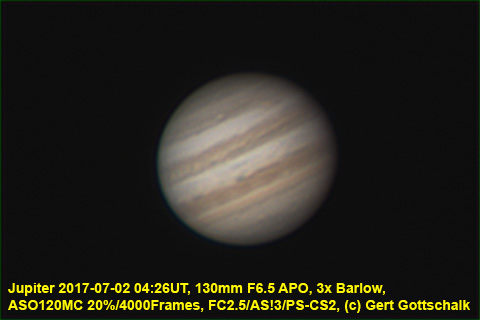
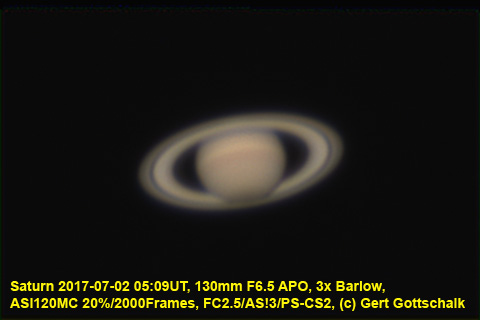
2017-06-18 04:12UT. At the TVS starparty Jupiter was giving a nice performance with 3 moons positioned close to the planet. Europa on the left and Io upper right and Ganymede lower right. We also see the reddish oval B-A again on the upper bright cloud band on Jupiter.
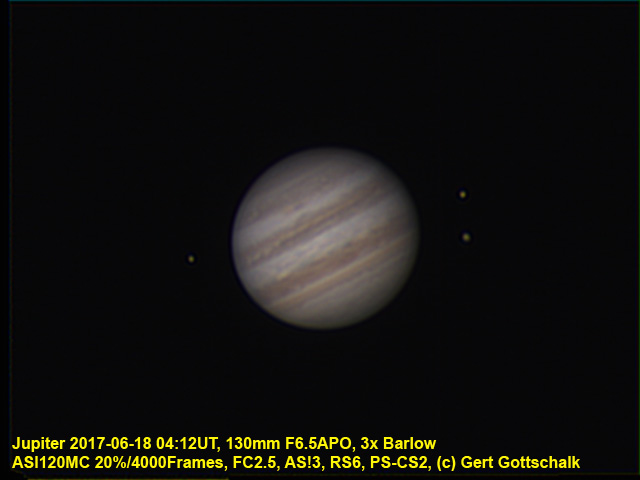

2017-06-04 03:25UT to 05:03UT. Starting even before sunset there was a double shadow transit on Jupiter of Io and Ganymede with Callisto moving behind the giant planet. There was also a favorable visibility of the Great Red Spot. Unfortunately the seeing was very intermittent and really only had a very few usable moments. One at 03:32UT was still OK and I got one usable still image below.
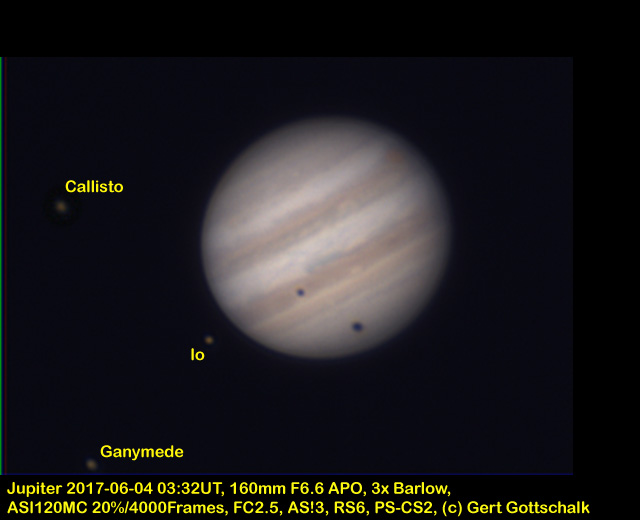
From a sequence of 38 images I made a time-lapse. The seeing changes is getting bad pretty quickly.
2017-05-18 04:12UT and 05:18UT. Tonight we had average to good seeing conditions and a passage of the Red Spot was going to be visible. At the beginning of the imaging session (left) we still see the oval BA at the upper left of Jupiter. Unfortunately at the beginning of the session the seeing was not as good yet. A little later at 05:18UT (right) the Red Spot has rotated into visibility. Also from the left the the Moon Io is approaching to be moving behind Jupiter later.

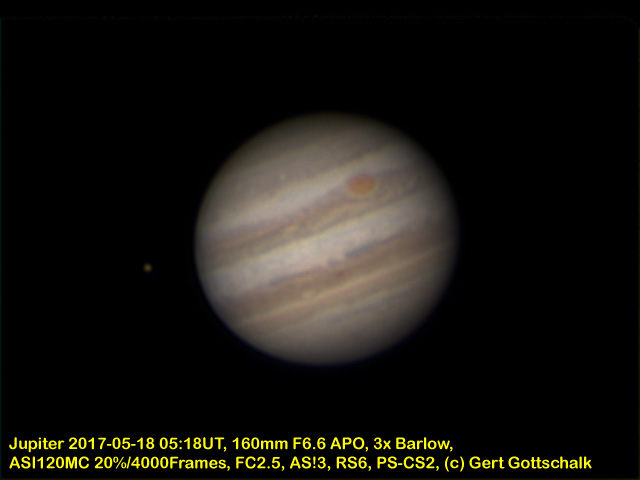
2017-05-18 05:42UT and 05:54UT. The seeing got better and the Red Spot moved closer to the meridian. Io is going to be covered by Jupiter in a few minutes. (left). A few minutes later 05:54UT Io is gone. The Red Spot is almost centered on the meridian.
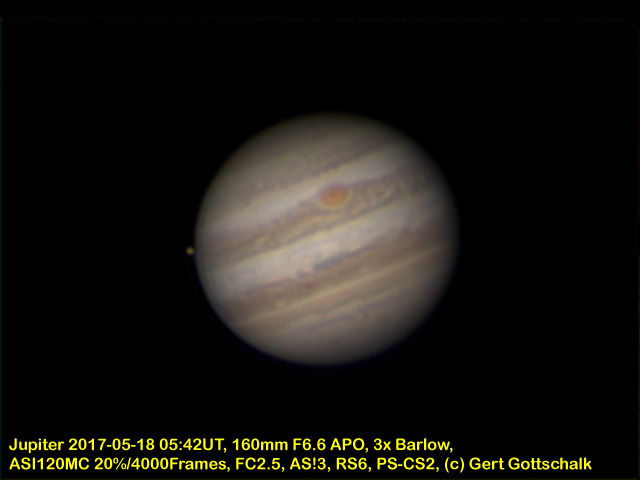
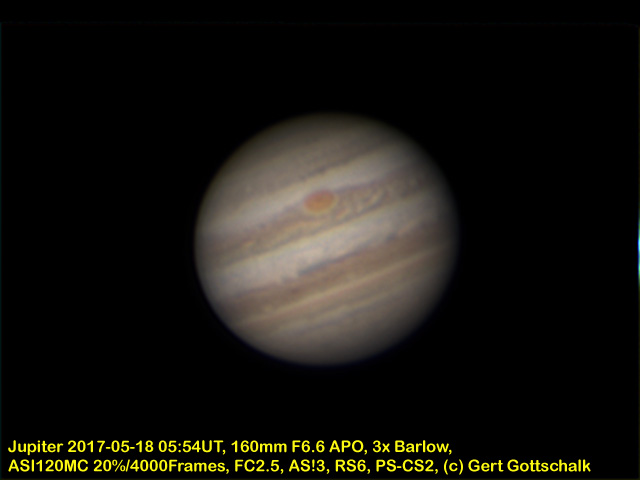
From 44 individual frames a short MP4 video timelapse was created using the ffmpeg tool. At first with still medium seeing conditions we see the oval BA rotating out of view. Then with the seeing improving the Red Spot comes in best visibility and the moon Io disappears behind Jupiter.
2017-05-03 05:14UT and 08:08UT. Tonight the seeing war not as good as for the last imaging session. There was going to be a shadow transit of Io and I wanted to capture the event. Then at the end the Red Spot would also barley become visible. Here are two images showing the progression of the shadow and the motion of Io in front of Jupiter. The other Moon in the upper right is Europe which is behind Jupiter just having emerged from an occultation.
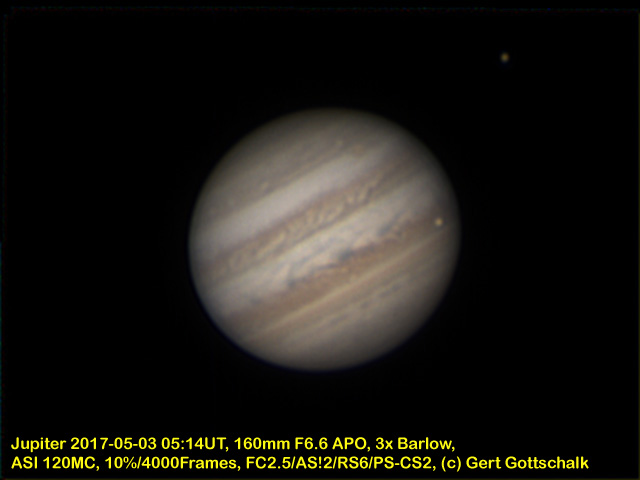
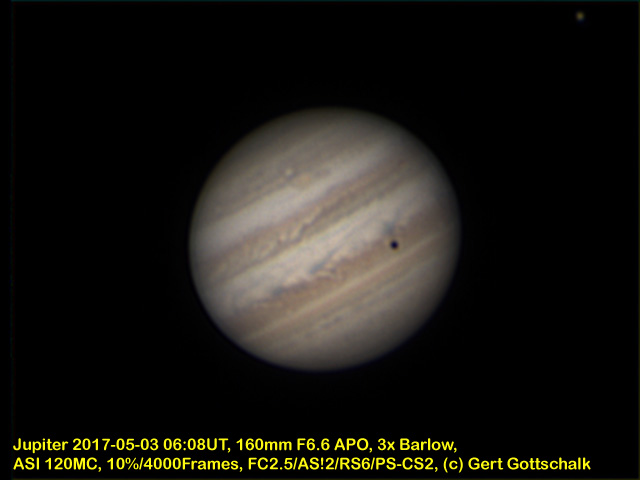
Overall 50 frames were produced and assembled into a time lapse video. Above Io's shadow we also see the red oval BA transiting at about the mid point of the video. Oval BA was first seen to turn red in 2000 and thus got the nickname Red Sport Jr. Notice also the Moon Europa emerging from the occultation.
The time-lapse sequence does not cover the transit to the end. A quite dramatic deterioration of the seeing ended the session. here is a comparison of the seeing at the start and end of the sequence.
2017-04-19 07:14UT. This was a clear night between two weather fronts and I had very low expectations about the seeing quality. but I was expecting a passage of the Great Red Spot and so I decided to setup the scope. That was the right decision. I was surprised when Jupiter had some excellent moments. Much better than the previous attempt. When I saw the image quality I started a recording sequence of 51 AVIs. Luckily Autostakkert!2 has a batch processing mode to do all the stacking automatically. Then however all the frames had to be manually wavelet sharpened in Registax. But the result was worth it. This image is the best pick from about the middle of the sequence, just when the Red Spot had crossed the meridian.
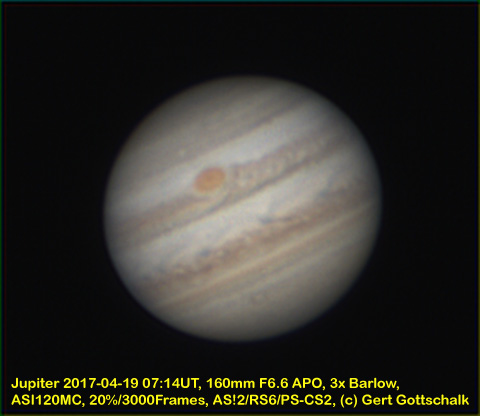
From the 51 sharpened individual frames I made an mp4 animation at 8fps. That seems to be a good compromise between smooth motion and not too high speed of rotation. We can see the slow variability of the seeing with some really good moments near the middle of the animation.
2017-04-02 07:28UT and 08:35UT Jupiter starts again (after DST change) to come into visibility from my spot at reasonable times. Tonight the Red Spot was rotating into view nicely with an added bonus later when Jupiter's moon Io became visible from behind the planet. The seeing was only average quality. Of 12 recordings with the ASI120MC camera the best two are shown below.
| Jupiter with the Red Spot | Jupiter's moon Io emerging from behind the planet. The Red Spot has rotated further and crossed the central meridian already. |
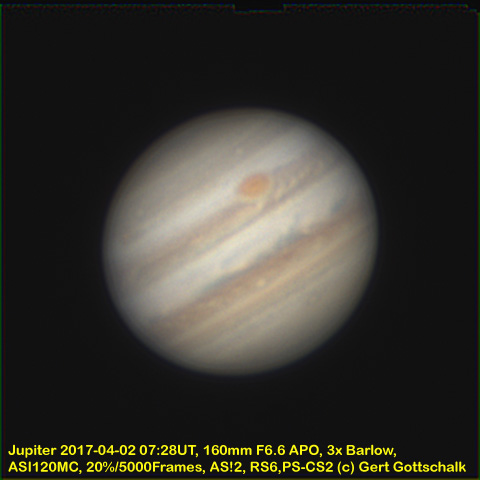 |
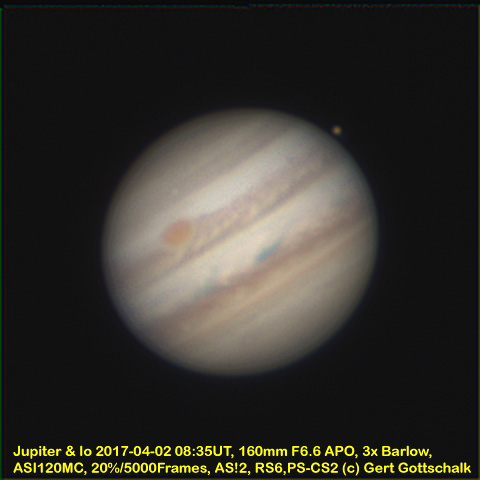 |
2017-03-25 19:03UT. Today Venus passed through inferior conjunction with the Sun. Thanks to the inclination of the orbits of Venus the Planet passed about 8degrees north of the Sun. At that separation it is possible with careful positioning to see Venus in a telescope and take some images. (Click on Image for full size).
2017-03-12 21:39UT. Venus is rapidly approaching the inferior conjunction and shows us a nice large crescent. This is a daytime observation with quite turbulent seeing.
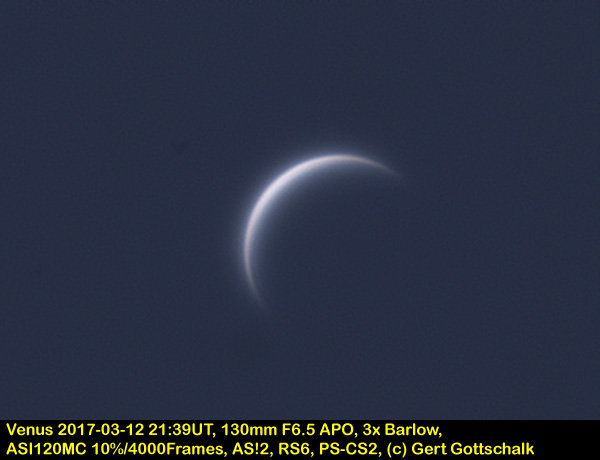
2017-03-12 08:35UT. The first planetary observation this year is from Jupiter. The seeing was not very favourable and Jupiter did not show the Red Spot. Let's hope for better seeing in the future.
